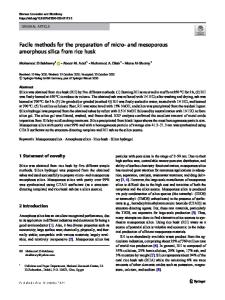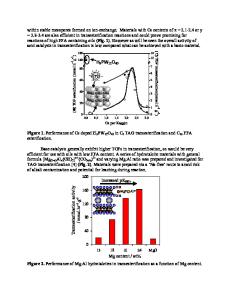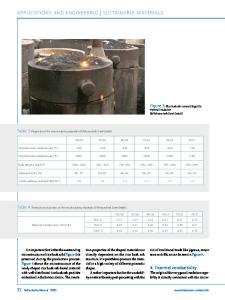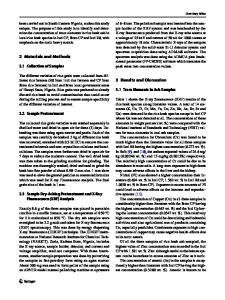Eco-friendly synthesis of nanostructured mesoporous materials from natural source rice husk silica for environmental app
- PDF / 2,327,627 Bytes
- 13 Pages / 595.276 x 790.866 pts Page_size
- 40 Downloads / 394 Views
ADVANCED OXIDATION/REDUCTION TECHNOLOGIES: AN PERSPECTIVE FROM IBEROAMERICAN COUNTRIES
Eco-friendly synthesis of nanostructured mesoporous materials from natural source rice husk silica for environmental applications Paola M. Carraro 1 & Tamara B. Benzaquén 1 & Griselda A. Eimer 1 Received: 30 June 2020 / Accepted: 28 September 2020 # Springer-Verlag GmbH Germany, part of Springer Nature 2020
Abstract Nanostructured mesoporous materials of MCM-41 type were synthesized using a natural, non-toxic, and cheap source of silica from rice husk. Then, this pure silica was modified with several Fe loadings by a wet impregnation method. The chemical and physic properties of MCM-41 solids obtained were similar to those of MCM-41 synthesized from commercial silica by conventional method. Thus, all catalysts exhibited good structural regularity preserving the mesoporosity after the metal incorporation. The performance of the Fe/MCM-RHA composites as photo-Fenton heterogeneous catalysts was evaluated for photocatalytic degradation of different endocrine-disrupting chemicals (EDCs), such as herbicides (atrazine), and compounds derived from the plastic industry (bisphenol A) and the pharmaceutical industry (acetaminophen). The major photo-catalytic efficiency obtained (Fe/MCM-RHA(2.5)) is consistent with the highest presence of iron species, which are finely dispersed and stabilized on the silica structure, the isolated Fe3+ ions being the accessible and active sites for the reaction. Finally, a cheaper solid arising from the valorization of residual biomass and with excellent photocatalytic performance for the degradation of EDCs (above 99%, 75%, and 60% for BPA, ATZ, and ACE respectively, in a reaction time of 240 min) was obtained. Keywords Nanostructured materials . Rice husk silica . MCM-41 . Water pollution . EDCs
Introduction During recent years, a persistent interest of researchers has been in the possibility of developing new, safe, non-toxic, and environmentally sustainable materials using waste and more environmentally friendly processes, reducing the environmental impact we place on our planet (Samaddar et al. 2018). The most efficient way to lower the negative impacts is designing and innovating in the manufacturing processes,
Responsible Editor: Santiago V. Luis Electronic supplementary material The online version of this article (https://doi.org/10.1007/s11356-020-11043-0) contains supplementary material, which is available to authorized users. * Tamara B. Benzaquén [email protected] * Griselda A. Eimer [email protected] 1
CITeQ – CONICET – UTN, Maestro López y Cruz Roja Argentina, Ciudad Universitaria, 5016 Córdoba, Argentina
taking into account different aspects such as energy source, reactants, and use and generation of secondary materials. Recently, a large part of the research has been focused on the efficient use of biomass to produce engineering materials and value-added products, considering the technological, scientific, economic, and environmental aspects (Brun et al. 2017). The crop resi
Data Loading...











